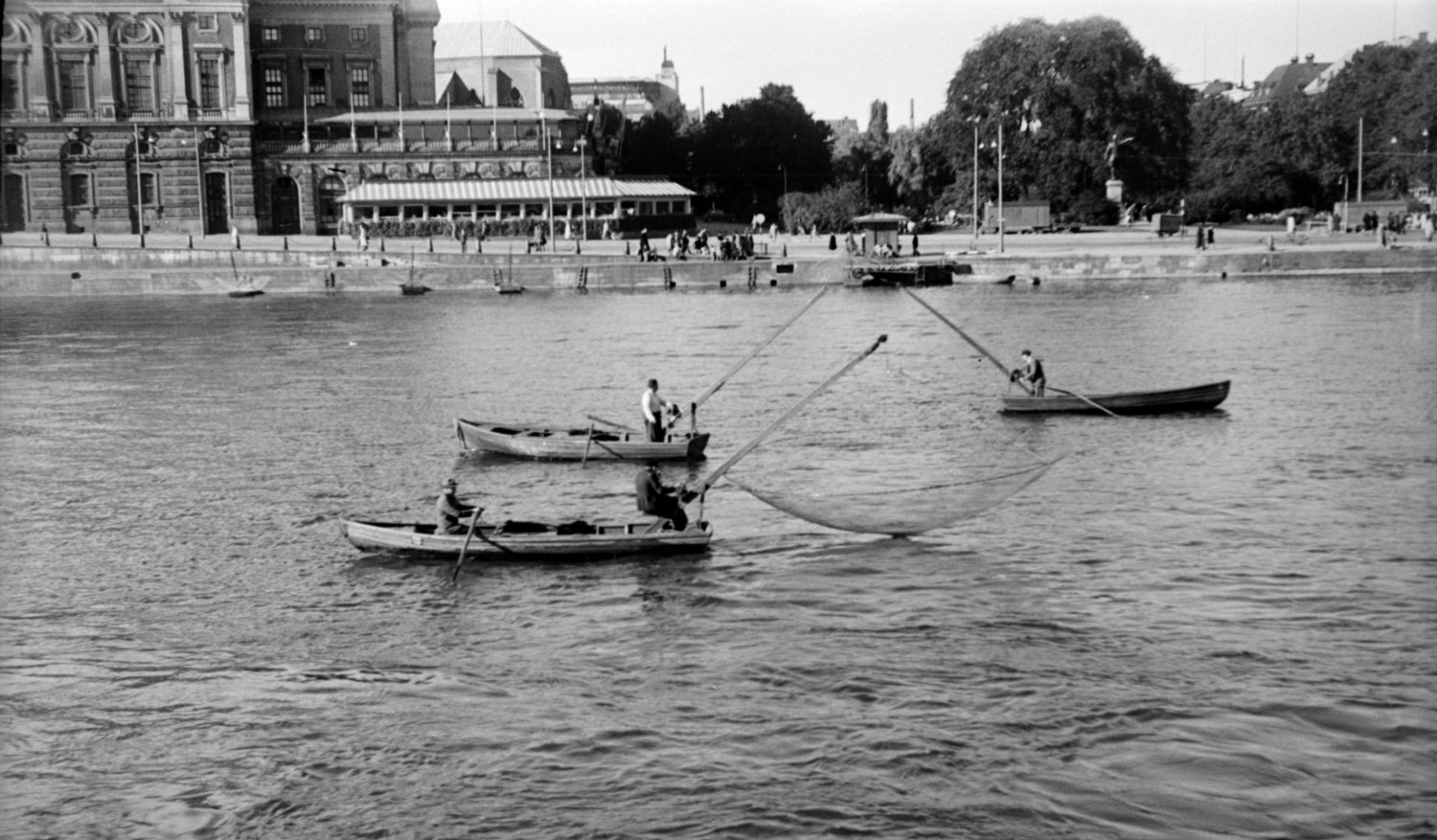- Startpage
- In English
- The Inventory
- Smelt fishing
Smelt fishing
Fishing for smelt is a popular activity that continues to attract interest from practitioners and spectators. Men, women, and children have historically taken part in catching smelt. Today, the tradition is mostly associated with the regions of Värmland and Bergslagen. The remaining fishing is done on a small scale.
Location: Värmland and Bergslagen
.jpg)
Photo: Ingvar Svanberg.
Historically, the smelt fish was an important staple in Sweden. During spawning, there were great quantities of smelt in rivers and streams. Spawning occurs in early spring. Traditionally, the fish was caught using bare hands, baskets, and hand nets. Smelt can be caught from boats and from land. Commercial smelt fishing continued until the late 20th century. Today’s fishing is carried out on a small scale, and knowledge about traditional methods is usually passed on within the family.
Smelt is one of the most common fish in the great lakes of Sweden. It grows slowly, on average reaching a length of 8–10 cm in one or two years. The smelt has a unique smell similar to that of fresh cucumber. When prepared, the smell vanishes. As the supply of smelt is good in Sweden, smelt fishing is considered a sustainable practice.
Archaeological finds suggest that smelt fishing has been carried out in Sweden since the early Stone Age. Medieval written sources mention smelt fishing, as do novels from the 17th century. Historically, loading nets were used to catch smelt. For many people, particularly working-class families, smelt was a welcome addition to an otherwise scarce diet. Smelt was prepared in various ways, and could be dried, salted, or eaten as an accompaniment to drinks, including coffee. Sometimes it was prepared as an oven-baked smelt pancake. When fried, smelt is usually served with potatoes. In the 1950s, Italian immigrants in Sweden used smelt to replace anchovies on pizza.
Until a few years ago, smelt fishing could still be seen in the Norrström river in central Stockholm. In other parts of Sweden, smelt fishing remains a common practice. During the spawning period, people gather at the riverbanks at night. Bonfires are lit, drawing spectators to the river. Hand nets are dragged downstream, in the hope that they will be filled with fish when lifted. The nets are emptied into buckets – usually a task for the children present – to be prepared later on. In recent years, Thai immigrants in Sweden have discovered smelt as an ingredient for their native cuisine.

